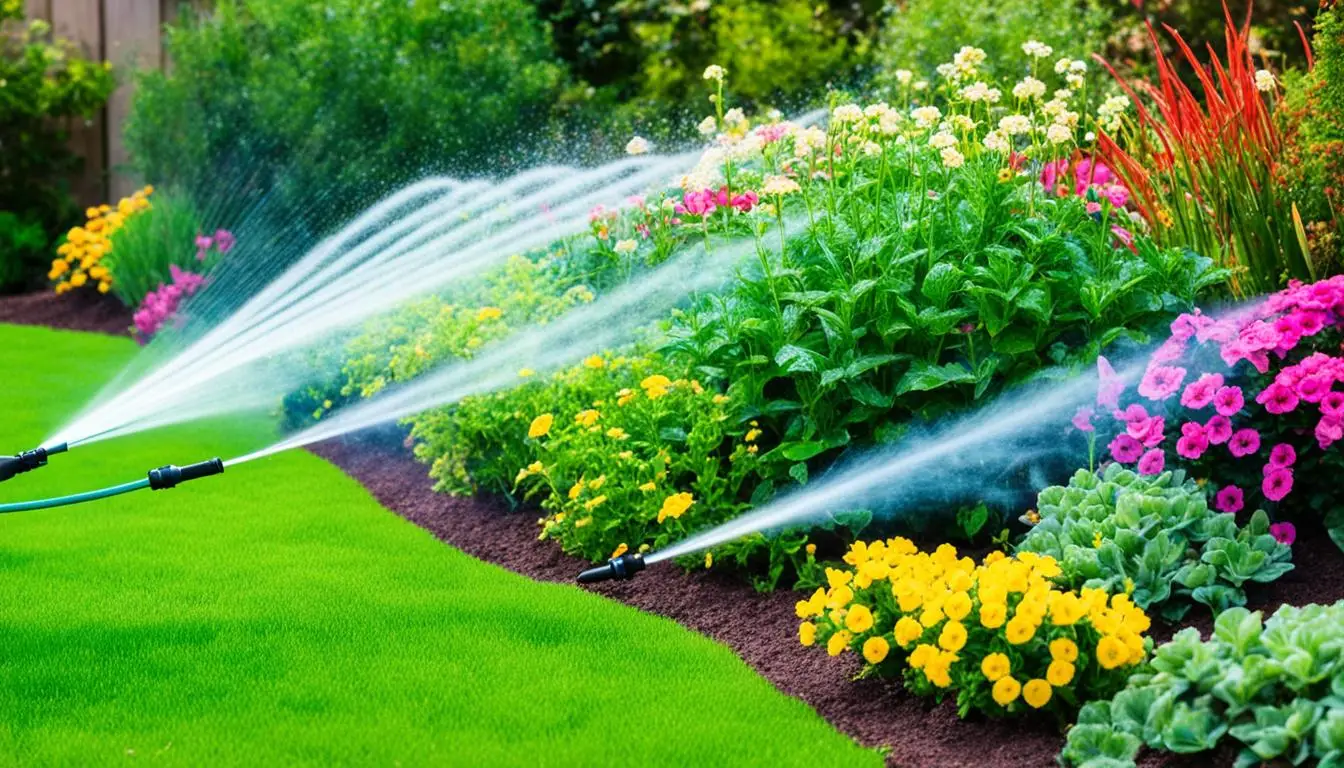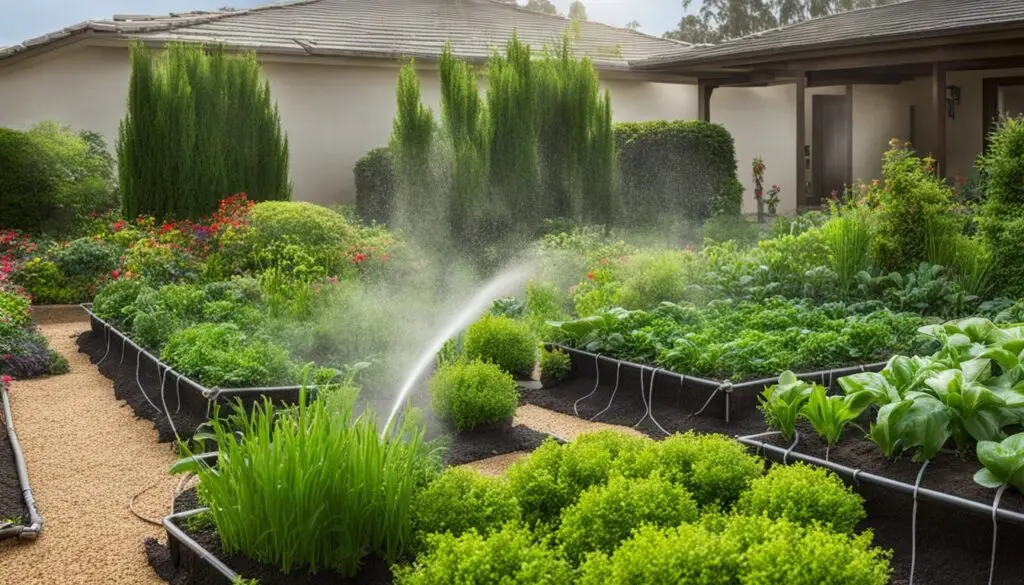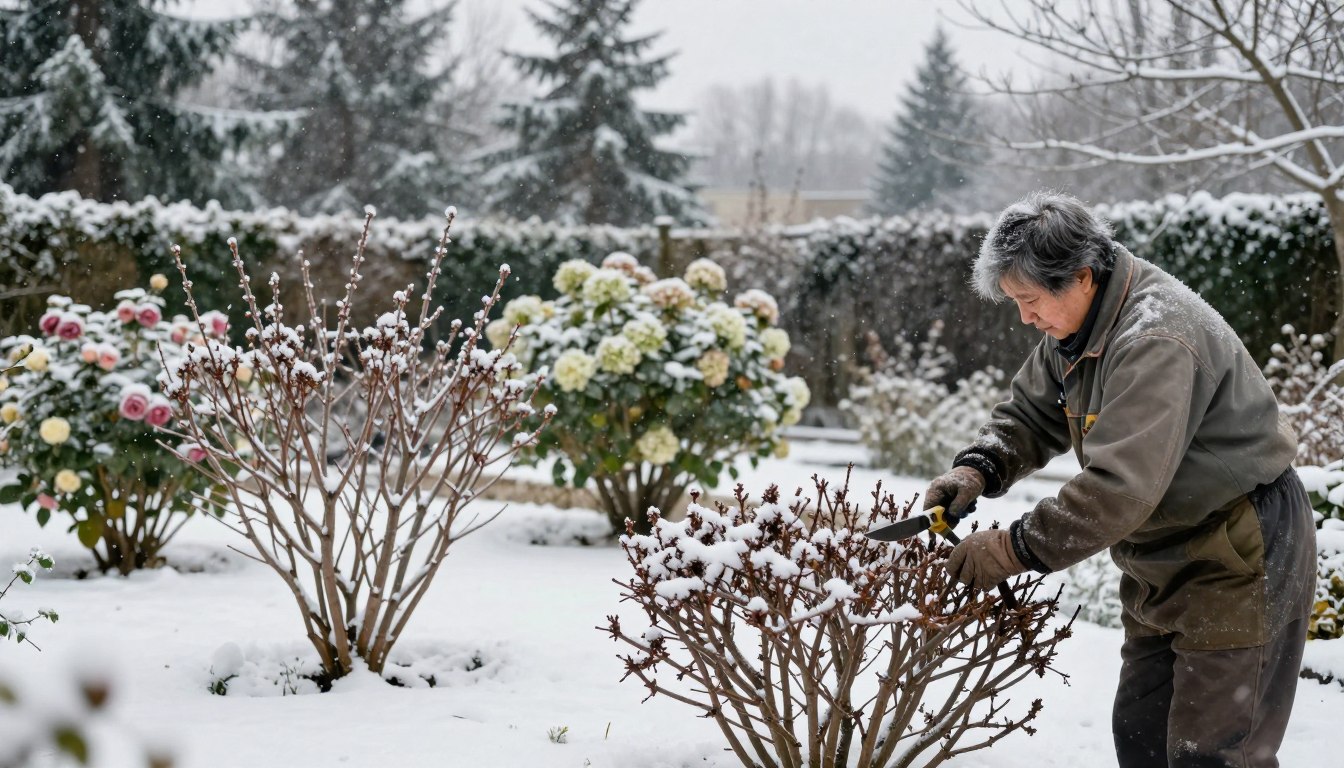Keeping your garden healthy is all about proper irrigation. There are many garden irrigation systems to choose from. Each one has its own benefits and things to consider.
Knowing about the types of garden irrigation helps you pick the best garden watering system for your space. This article will cover various garden irrigation systems, like overhead sprinklers and drip irrigation. It aims to guide you to make a smart choice for your garden.
Key Takeaways
- Proper irrigation is key for a healthy garden.
- Different garden irrigation systems offer unique benefits and considerations.
- Understanding options, such as drip irrigation and sprinkler systems, aids in picking the best system.
- Looking into the features and uses of garden watering systems helps make an informed choice.
- The right irrigation system boosts your garden’s sustainability and efficiency.
Introduction to Garden Irrigation Systems
Watering your garden right is key for it to grow well. The right amount of water helps plants grow strong. It stops them from getting too much or too little water, avoiding damage.
Importance of Proper Irrigation
It’s vital to water gardens just enough and at the right time. This lets plants get the nutrients they need and stay healthy. Proper watering helps them deal with tough weather.
With the right water amounts, you can have a lush, healthy garden.
Factors Influencing Irrigation Needs
How much and often a garden needs water depends on many things. This includes the type of soil, the weather, the kinds of plants, and how big the garden is. Gardens with sandy soil might need more water.
Drought-resistant plants, on the other hand, need less water. It’s important to think about these things when picking the best way to water your garden.
Overhead Sprinkler Systems
Overhead sprinkler systems are great for big areas like gardens and lawns. They use many sprinkler heads to spread water evenly. We’ll look at the benefits of fixed spray and rotary sprinklers. Also, how important it is to have all sprinklers watering the same amount.
Fixed Spray Sprinklers
Fixed spray sprinklers gently water plants and soil with a uniform pattern. These are perfect for gardens with different plants since they water consistently. They are efficient, avoiding water waste, and promote healthy plant growth.
Rotary Sprinklers
Rotary sprinklers have a rotating part that waters a wide area. They’re ideal for big lawns or open spaces because they cover more ground. The rotating feature helps water the whole area evenly, reducing the chance of some spots getting too much or too little water.
Matched Precipitation Rate
Having a matched precipitation rate across all sprinklers is key. This ensures every part of the garden gets the same amount of water. It leads to efficient water use, reduces waste, and keeps plants healthy.
Drip Irrigation Systems
Drip irrigation systems are great for gardens and landscapes. They use tubing and emitters to send water right to plant roots. This cuts down on wasted water and keeps plants at their best.
Inline Drip Emitters
Inline drip emitters put water right where plants need it. They’re spaced out evenly on the tubes. This way, each plant gets just the right amount of water. It’s a perfect fit for any garden, big or small.
Subsurface Drip Lines
Subsurface drip lines go under the soil and water plants from below. This keeps water from evaporating and reaches plant roots directly. They work well for plants with shallow roots and keep soil disruption to a minimum.
Benefits of Drip Irrigation
Drip irrigation is all about using water wisely. It sends water straight to plant roots. This helps plants grow strong without wasting water. Plus, it reduces the chance of water damage to plants.
Choosing drip irrigation means your garden will use water better. This leads to healthier plants and a more eco-friendly outdoor area.
“Understanding Different Types of Garden Irrigation Systems”
It’s key to know about various garden irrigation systems for a healthy garden. You can pick from overhead sprinklers to drip irrigation based on what your garden needs. This choice impacts how well your plants grow and save water.
Learning about the types of irrigation helps use water better and waste less. Options range from automated irrigation to precise drip systems. With the right choice, your garden can be beautiful and green, using its water wisely.
Knowing your options in garden irrigation systems lets you choose wisely. Whether you go for the latest automated irrigation or a simple drip system, it’s about what your garden needs. This way, you can have a thriving garden that also helps the planet.
Surface Irrigation Systems
Drip systems and sprinklers are popular for watering. However, surface irrigation systems are important too. They use the land’s slope and gravity to spread water. This way, farms and gardens save money and work with nature.
Gravity-Fed Systems
Gravity-fed irrigation uses the land’s slope to move water. It goes down channels to reach plants. You can make sure the water goes where it’s needed by planning how the water flows. This method is great for places with lots of rain or places that need to save water.
Flood and Furrow Irrigation
Flood and furrow irrigation are also used. In this method, water covers the ground or flows in shallow lines. It’s good for places not too wet or where soil is hard. This way, water doesn’t disappear quickly and plants get what they need. But, it is important to manage the land’s slope well to avoid losing water and soil.
No matter the method, surface irrigation has many pluses. It saves money, works well for big areas, and uses natural processes. When used right, it helps plants grow strong and keeps the environment healthy. So, knowing how to use surface irrigation is good for everyone who grows plants outside.
Smart Irrigation Controllers
With advancing technology, smart irrigation controllers are changing how we water our gardens. They use weather-based scheduling and soil moisture sensors. This makes watering efficient and automatic.
Weather-Based Scheduling
These controllers look at real-time weather data. They check rainfall and evapotranspiration rates to adjust watering. This means plants get just the right amount of water. It cuts waste and helps plants grow strong and healthy.
Soil Moisture Sensors
Smart controllers also have soil moisture sensors. These sensors monitor soil moisture. They send updates to the controller. So, watering is always exactly what the plants need. This saves water and makes irrigation more effective.
Using smart irrigation controllers means your garden’s watering is in sync with the weather. This method saves water and keeps your plants moist. It leads to a garden that’s lush and full of life.
Conclusion
Choosing the right garden irrigation system is key. It can greatly help our outdoor areas stay healthy and green. We should look at the benefits of each type and what makes them work well.
Options include overhead sprinklers, drip lines, or smart systems. The main goal is to use water wisely, keep our plants healthy, and think about the future of our gardens.
With a good irrigation setup, our gardens will bloom. This helps save water and keeps our environment in good shape. Using the best watering methods and technology makes it all possible.
There are many ways to water our gardens. By making smart choices, we can ensure our plants thrive and our spaces stay green. This is all about working with nature.
FAQ
Q: What are the different types of garden irrigation systems?
A: There are several types of garden irrigation systems. This includes overhead sprinklers, drip systems, surface irrigation, and smart controllers.
Q: What are the benefits of drip irrigation systems?
A: Drip irrigation is very effective. It brings water right to the plant roots using tubes and emitters. This method uses less water and meets each plant’s specific needs.
Q: How do smart irrigation controllers work?
A: Smart controllers gather weather and soil data. They then adjust watering cycles to fit the plants’ specific needs. This method saves water and ensures plants are watered just right.
Q: What factors influence the irrigation needs of a garden?
A: Many things affect how much water a garden needs. These include the soil, climate, types of plants, and the garden’s size and layout.
Q: What are the advantages of using overhead sprinkler systems?
A: Overhead sprinklers are great for big areas. They use sprinkler heads to water in a wide, rotating spray. This way, they cover a lot of ground.
Q: How do surface irrigation systems work?
A: Surface irrigation uses the land’s slope to spread water. It can be by gravity, through channels, or just flooding. This reaches all the garden’s surfaces.







